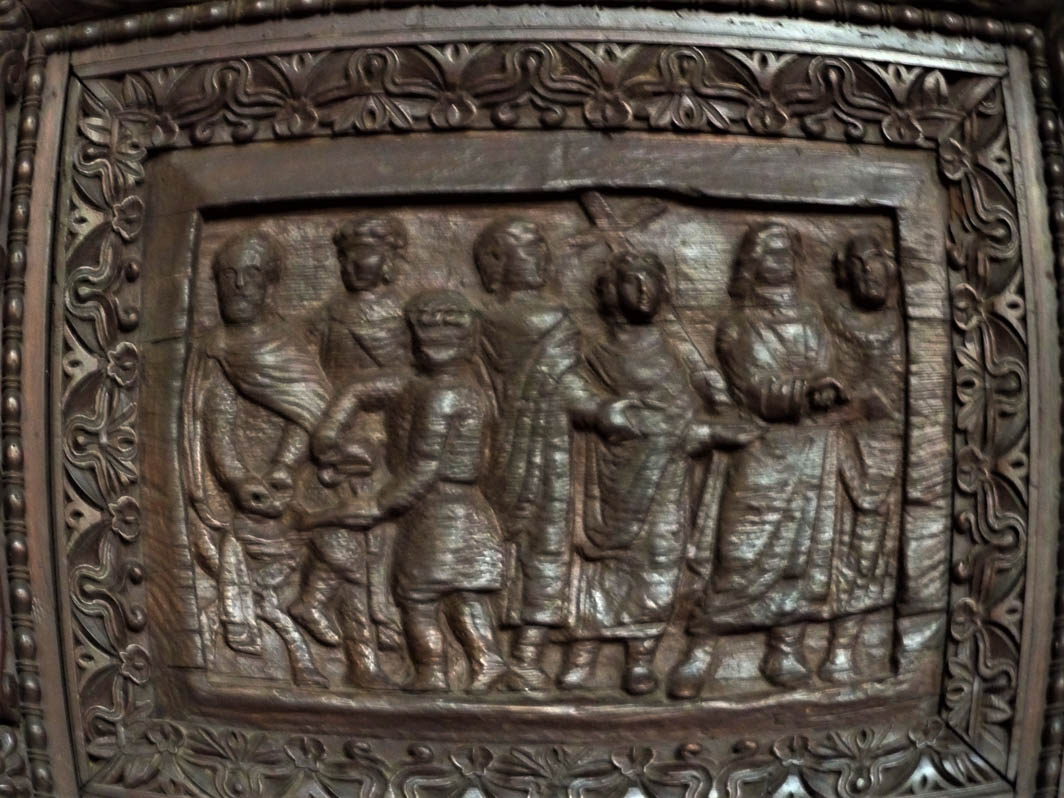
POSTACIE Popes and their associates
Pope Celestine I (?–432) – philosopher striving for the divinity of the mother of Jesus

We do not know a lot about him – reportedly he was an expert on the Holy Scriptures and philosophy, which allowed him to freely participate in theological discussions, which during his ten-year tenure as the bishop of Rome (422-432) more and more took on the form of a conflict in the womb of the Church. They concerned Pelagianism and Nestorianism – spreading doctrines regarding the presence of a human and divine element in the persona of the Savior. Celestine was a supporter of the view of consubstiantality of the Son and Father, in opposition to Nestorius, who believed that Christ possessed two separate natures: human and divine – he was in this sense a sort of a vessel in which Logos – God, found its place. The pope was also a propagator of the dogma issued at the Council of Ephesus in 431 about the divine motherhood of the Blessed Virgin Mary and bestowing upon her the title of Mother of God (Theotokos), once again in opposition to the aforementioned Nestorius, who opposed such a formula believing that the Virgin Mary can only be called the Mother of Christ (Christotokos). The council condemned Nestorius, while the cult of the Mother of God inaugurated upon it, spread all over the Christin world, however, mainly in Rome which can be testified to by the construction of the monumental Basilica of Santa Maria Maggiore, by the successor of pope Celestine – Sixtus III. During the pontificate of Celestine I significant changes took place in Rome. The Roman Empire was still in existence, the emperors as we know reigned until the abdication of 476, however they were not overly interested in the city on the Tiber, and even less so in its buildings. In this regard their role was gradually taken over by the bishop of Rome, while individuals working under his auspices, became influential funders, who in their generosity were driven both by the good of the Church, as well as by the need to absolve their own sins and guarantee themselves a better position after death. Such funds were used to construct, the still preserved until the present in nearly its original form, Church of Santa Sabina on Aventine Hill, of which we are informed by the mosaic inscription praising the deed of the pope.
Buildings and structures created during the pontificate of Celestine I:
Może zainteresuje Cię również
Pope Sixtus III (390–440) – a great constructor of Christian Rome
Zgodnie z art. 13 ust. 1 i ust. 2 rozporządzenia Parlamentu Europejskiego i Rady (UE) 2016/679 z 27 kwietnia 2016 r. w sprawie ochrony osób fizycznych w związku z przetwarzaniem danych osobowych i w sprawie swobodnego przepływu takich danych oraz uchylenia dyrektywy 95/46/WE (RODO), informujemy, że Administratorem Pani/Pana danych osobowych jest firma: Econ-sk GmbH, Billbrookdeich 103, 22113 Hamburg, Niemcy
Przetwarzanie Pani/Pana danych osobowych będzie się odbywać na podstawie art. 6 RODO i w celu marketingowym Administrator powołuje się na prawnie uzasadniony interes, którym jest zbieranie danych statystycznych i analizowanie ruchu na stronie internetowej. Podanie danych osobowych na stronie internetowej http://roma-nonpertutti.com/ jest dobrowolne.